Oh, Dying Light, how I love you. I love the way you let me leap across rooftops and climb tall towers like an acrobat with endless supplies of energy. I love how I can dropkick a zombie and watch its flailing body knock over others like a fleshy bowling ball. I love looking over my shoulder as I run through the darkness, only to see a crowd of undead sprinting towards me, growling hideously and baring their ghastly teeth.
But oh, Dying Light, how you irritate me. I hate you for the gunners that ambushed me as I swam underwater, because there was no way to know how to react until I emerged and discovered that I wasn't meant to peek my head out--not yet. I hate you for that time you filled the screen with so much haze and bloom during a boss fight that I couldn't see properly. I hate that sequence when you made me leap from one pole to another, because you made it hard to get a good look at my surroundings, and your button prompts are hardly generous. And I hate these moments most because your systems are strong enough to let the open-world gameplay do the heavy lifting. The harder you try to direct the action, the weaker you become.
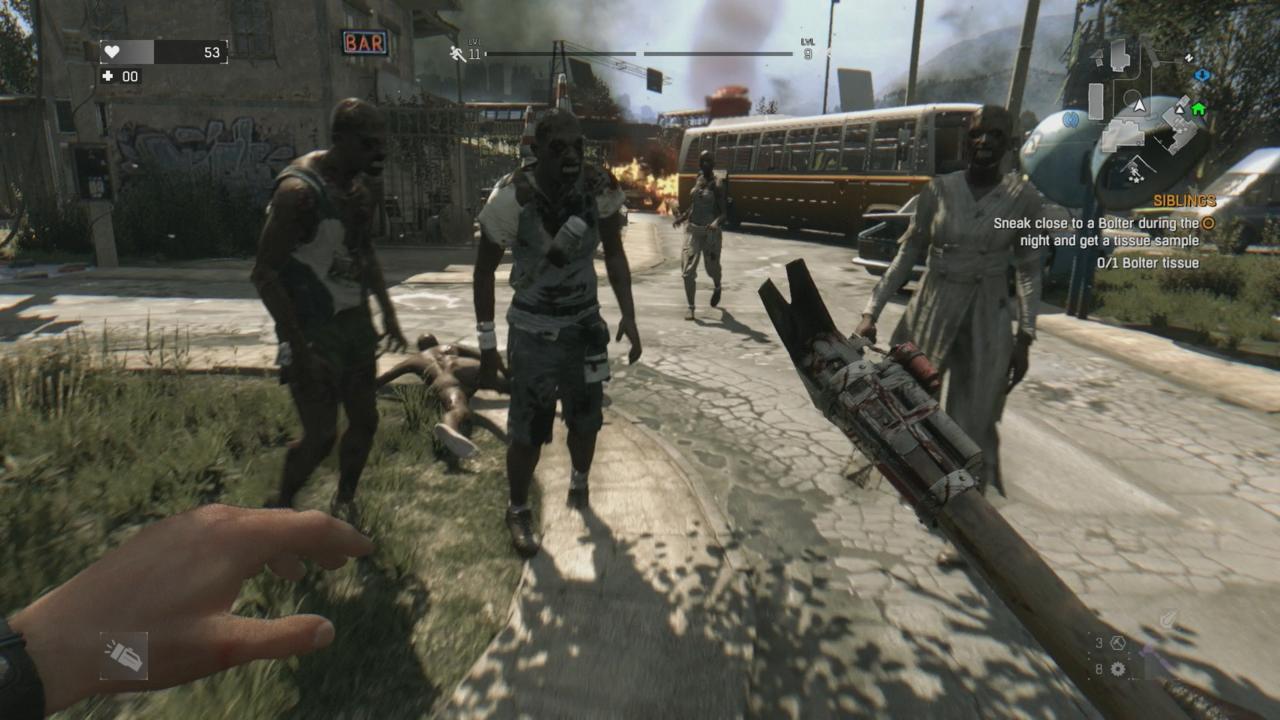
If you count yourself among the Dead Island fandom, your expectations are already set. You understand developer Techland's inconsistencies, and you are prepared to disregard the chaff so that you may reap the grain. Dying Light spawns from the same pile of mutated freaks as Dead Island, but it establishes its separate identity early on. The first difference to become clear is in tone: where Dead Island's story was difficult to take seriously, Dying Light sets the stage for a dark drama with a city overrun with infected victims, and a desperate populace anxious for hospice and aid. There are light touches here and there: you stumble upon The Bites Motel, for instance, and magazine covers and other details offer plenty of sight gags. But you are meant to be fearful and cautious, and you are meant to empathize with the survivors working so hard just to stay alive, let alone thrive.
As a covert operative sent to the city of Harran to recover a secret file, you find yourself in over your head, playing triple agent as you run errands for the city's two primary factions while radioing information to your agency's head honcho. Death is always in the air, not just because the infected have overrun the city's two sizable explorable areas, but because the survivors are so weary, so close to defeat. Dying Light lumbers through one cliche after another, but it's perfectly palatable: expressive faces and decent voice acting make the story beats and cutscenes worth paying attention to, even when the specifics--the antihero with a heart of gold, the doctor close to discovering a cure, the power-hungry villain--fall solidly within been-there, done-that territory.
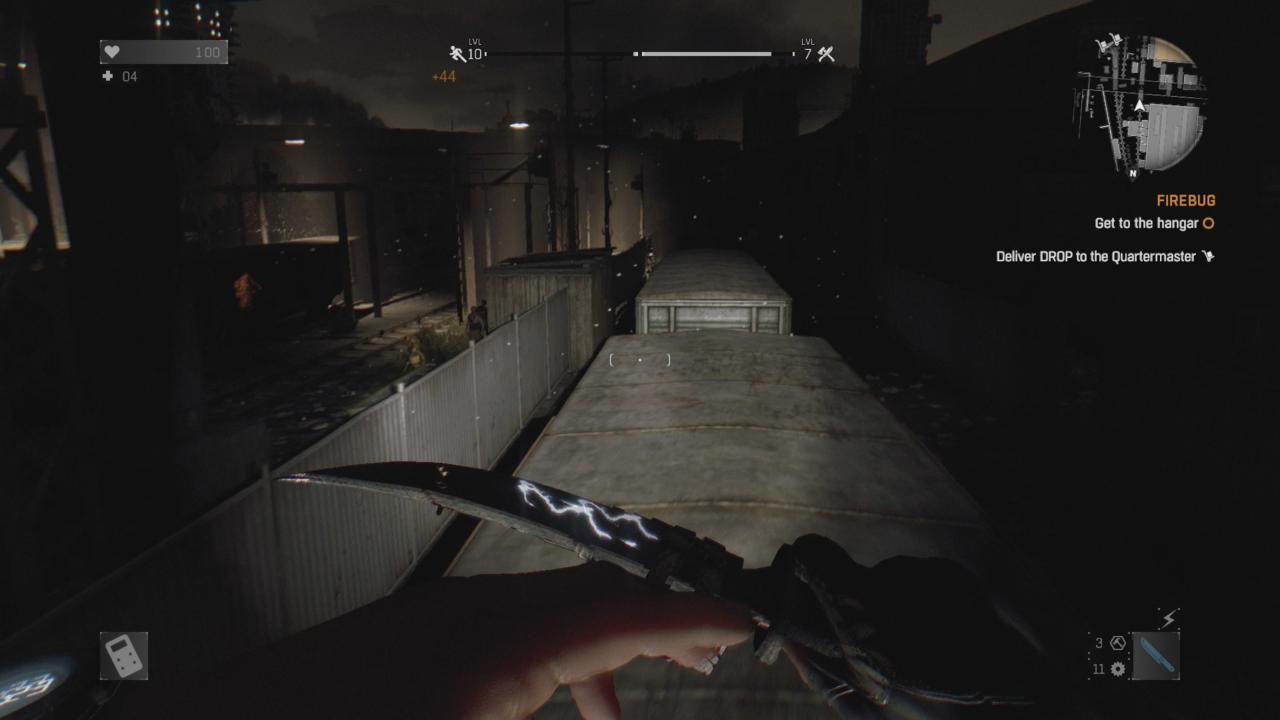
Dying Light also sets itself apart with its parkour system, which sees you running across the city from a first-person perspective. It takes a short while to get used to climbing onto ledges, which requires you to be looking at them in the proper way. But then it's off to the races, and you're running across rooftops and sneering at the zombies below, most of which can't handle the climb. Rushing through the open world this way is terrific, due to solid (if not quite excellent) controls and well-constructed climbing and leaping paths, particularly in the game's second half, which takes place in the city's vertically-minded old town. Even better, the parkour energizes moments of great tension. Far Cry comparisons are easy, given how you unlock a few of the game's safe houses by climbing tall towers. But the climbing requires more finesse and situational awareness than it does in Far Cry 4, and some of the towers are outrageously tall, making the entire endeavor an anxious exercise in precision.
And tension is yet another aspect of Dying Light that sets it apart from its zombie-game peers. When night falls, particularly dangerous and fast zombies roam the city, and the entire timbre changes. It's best to circumvent the vision cones of those baddies and avoid direct confrontation, but you're occasionally mobbed in spite of your careful movement. These undead are more persistent than the Liberty City police department, so the best option is to run, run, run until you lose them. You can hold a button to look behind you and see how close they are, and doing so can be startling when you see the incoming horde. It's been some time since a zombie game legitimately scared me, but that look-behind-you move reveals some creepy sights. During the day, you scamper around and, occasionally, confront your infected fears. Once the sun has set, you slink and sprint, trying not to catch the deadly eyes of nearby volatiles.
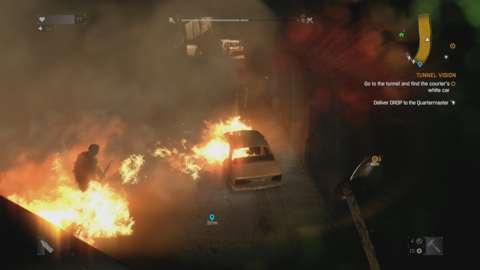
Throw in a three-pronged upgrade system that makes you stronger and more agile as the game progresses, and you have the foundation of a great game. Alas, Dying Light flounders too often for it to achieve greatness, though it's poised to develop the same cult following that so many Techland games do. This is a surprisingly long game stuffed with, well, stuff, yet your role for too many hours is to play errand boy--a role so demeaning that even lead character Kyle Crane remarks upon it. Go flip a switch. Go collect crayons, or mushrooms, or coffee. As the first act draws to a close, Dying Light has taken a turn for the worse: each time the game grants you structure, it struggles, to the point where you might wish the gofer quests would return, because the ones that have taken their place are either frustrating slogs, or simply bad ideas.
The slog arises because these simple tasks require you to cover a lot of real estate. As fun as it is to move through Harran, the parkour doesn't carry the game alone. The other problem with Dying Light's first half, as dumb as it may sound, is the zombie crowd itself, which is not powerful enough to provide a huge challenge, but is too powerful to wholly ignore. The undead become annoyances--children that wave their arms around and demand attention while the game asks you to once again take to the streets so you can pull a lever.
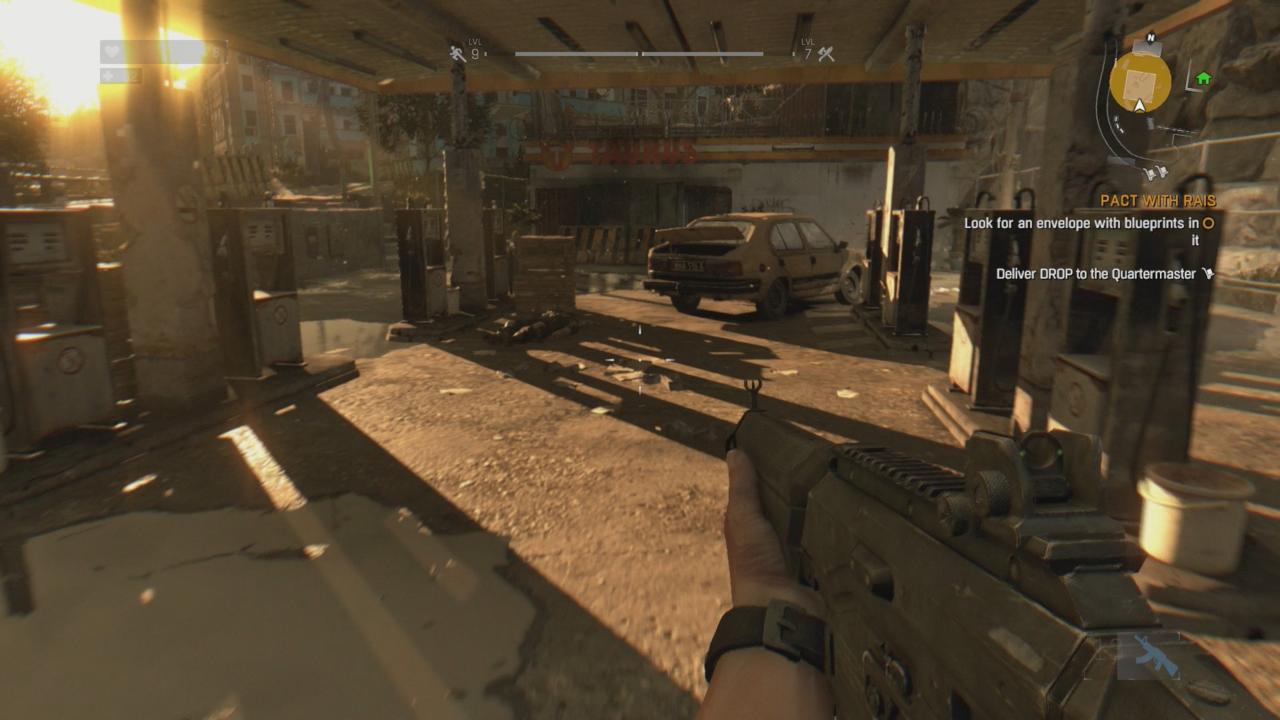
The bad arrives when Dying Light embraces ideas that have an air of cleverness, but have you crying out "what were you thinking?" as implemented. There is the time you quaff a potion intended to temporarily disguise you from the undead, but it reverses your movement controls. And so death might very well ensue depending on when you drink and how quickly you adjust to the surprise. There is the time you descend on a zip line and let the game drop you at the very end of it, only to take a good amount of fall damage. There's a garbage pile a few feet before the end that you can leap into, but the limited field of view when ziplining, and the general visual bleariness, mean you probably won't know it's there until you've lost half of your health bar, and you're cursing Techland for not noticing how these elements don't quite work together--or worse, for not caring.
These are just a few examples of the frustrations that set in. Once the second act arrives and you enter old town, however, there's a moment of revelation when you gaze upon the district and take in its beauty. The slog has been set aside, and excitement for new navigation blossoms. Depending on how you spend the skill points you earn, you gain access to a grappling hook that provides so much stimulation that you wish you'd gained access to it even earlier. Then again, Dying Light gets occasionally lost in "ideas" even in the second half--shooting segments that lack tightness, confrontations with multiple kinds of big baddies that have you flying backwards and getting poisoned simultaneously, and so forth. You've got the tools to succeed, at least, even when the fun meter drops: upgradable weapons starting with knives and baseball bats and working up to machetes and ice picks, along with throwables like grenades and molotov cocktails. Those weapons degrade quickly, but there are more of them scattered around than you will ever need.
When night falls, particularly dangerous and fast zombies roam the city, and the entire timbre changes.
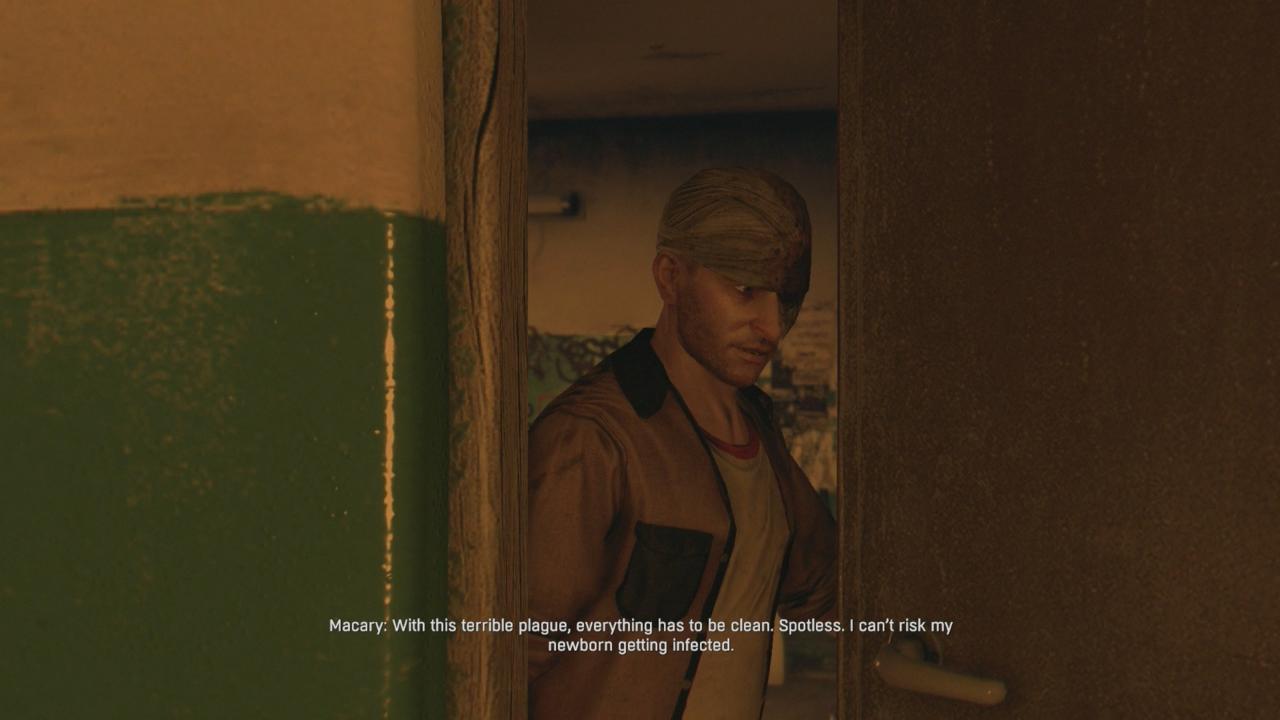
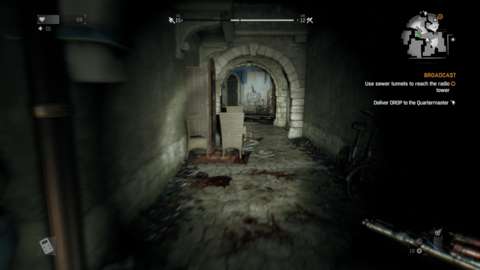
Dying Light succeeds when it remains confident in its systems. The combat isn't as fulfilling as it is in Dead Island--you won't be breaking any arms--but out in that wild world, you aren't meant to wade into the horde anyhow. What drives the action is the promise of discovery and self-improvement. There are locks to pick and supplies to nab before the opposing faction gets to them. The balconies harbor new people to meet, who share their stories if you stick around long enough to hear them. When a zombie or six draw near, you swipe, kick, and bash until the blood is flying and the grunts are silenced, and you can return to your pillaging. Dying Light most often approaches greatness when it allows you to improvise your own tune instead of clumsily trying to conduct the entire orchestra.
That a game of such wild fluctuations can still give rise to so much fun speaks well of its high points. Those peaks rise even higher when other players are involved, and you have a few friends (up to three) join you, distracting the speedy virals while you take care of a ground-pounding beast swinging his giant hammer around. Competitive zombie invasions are liable to have you tensing your muscles even further invasions when they turn the game into a nighttime arena. This is Be the Zombie mode, and while using your tentacle to grapple your way around as a zombie is enjoyable, it is the tension you feel as a hunted human that makes these moments stand out. You can tweak your setting to allow or disallow these sudden multiplayer matches, and there's no shame in wanting to explore without distraction. But if Dying Light's nighttime pressures appeal to you, allowing zombie attacks further extends that drama.
I am rooting for Dying Light's success, even as I shake my head at its avoidable foibles. I understand it, I get it, and so I find pleasure in it even as it disappoints me, even when I land between a fence and a rocky cliff and get stuck there, even when I don't grab a ledge or pole after a jump for reasons that I can't quite understand. My dearest Dying Light, I am so grateful for your specialness, for it shines through even when I am prepared to damn you to hell.